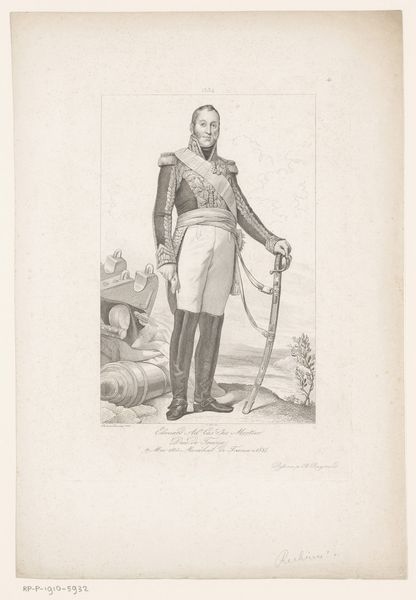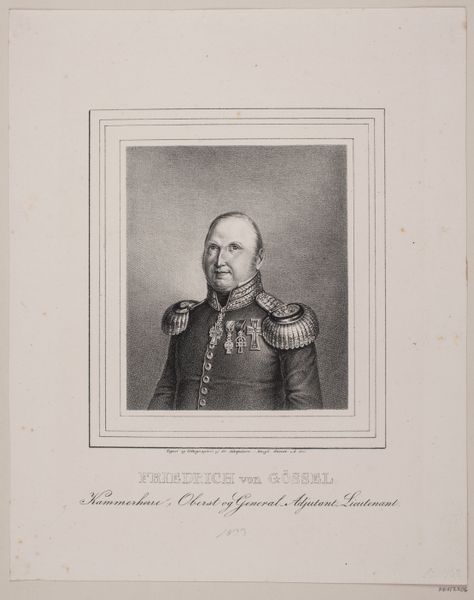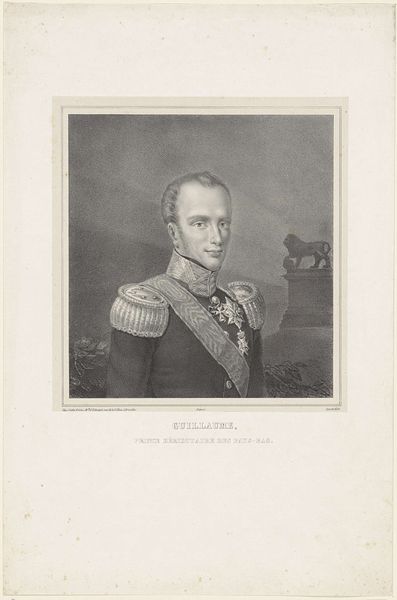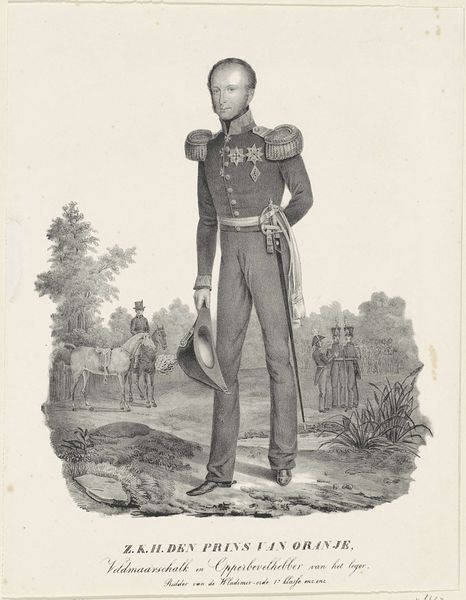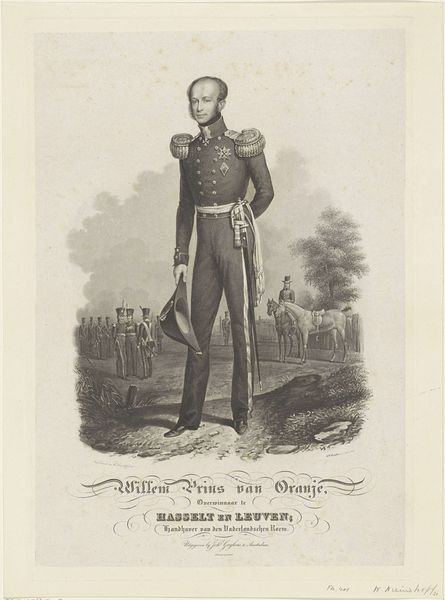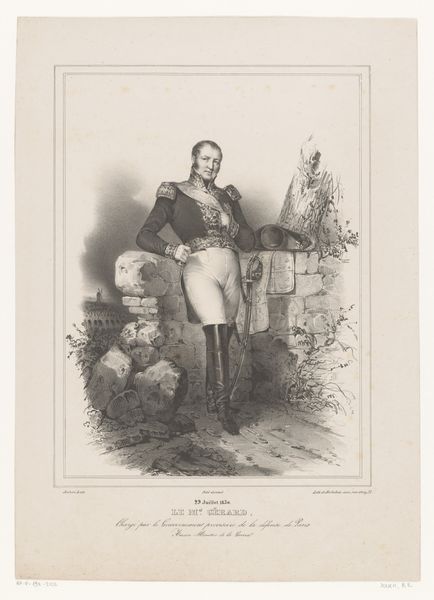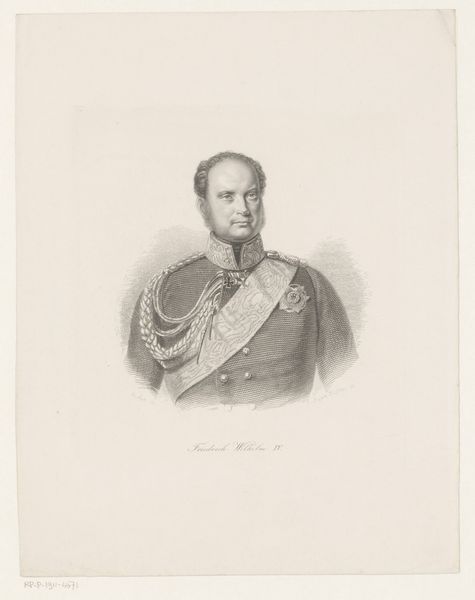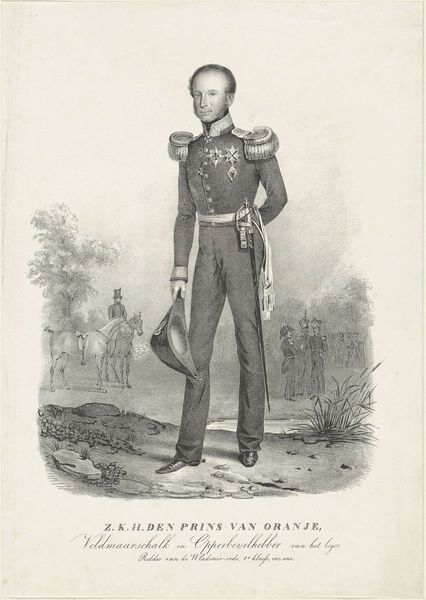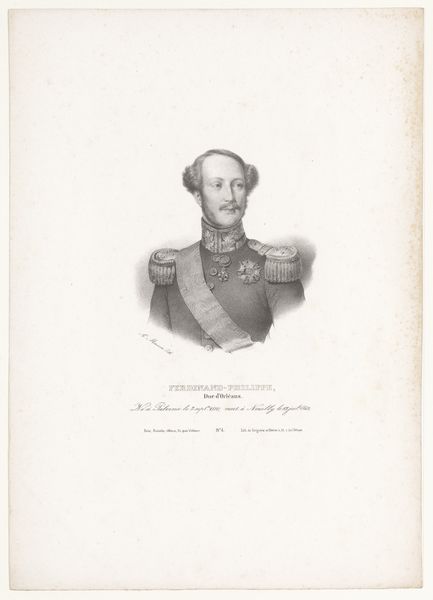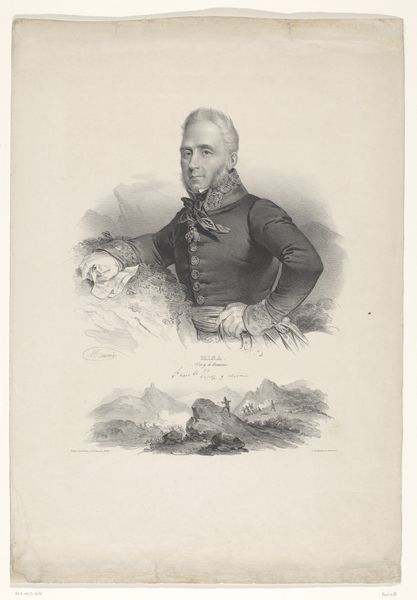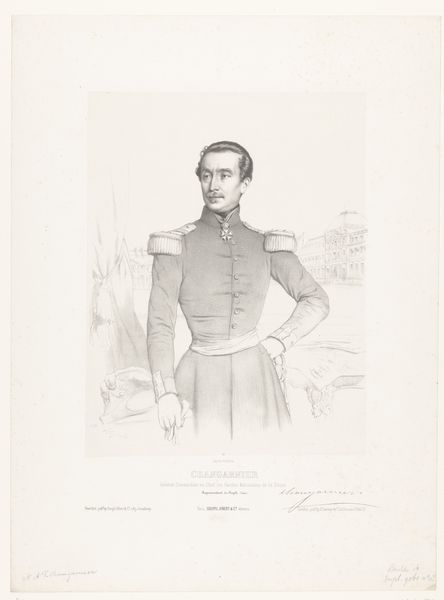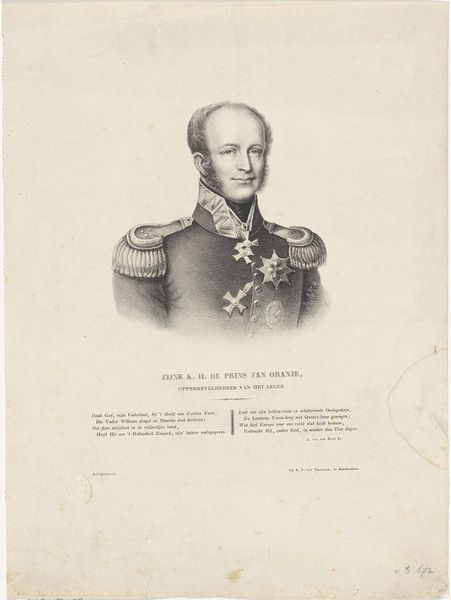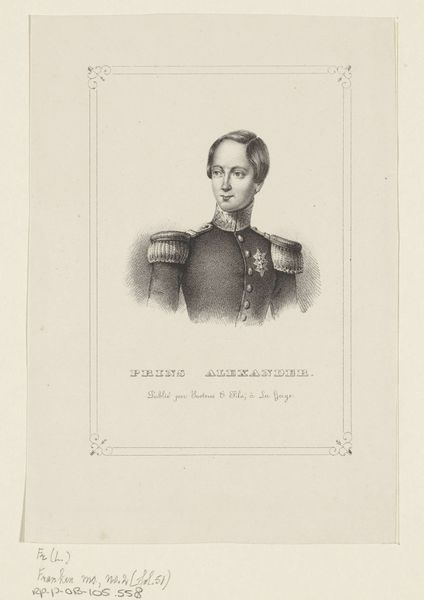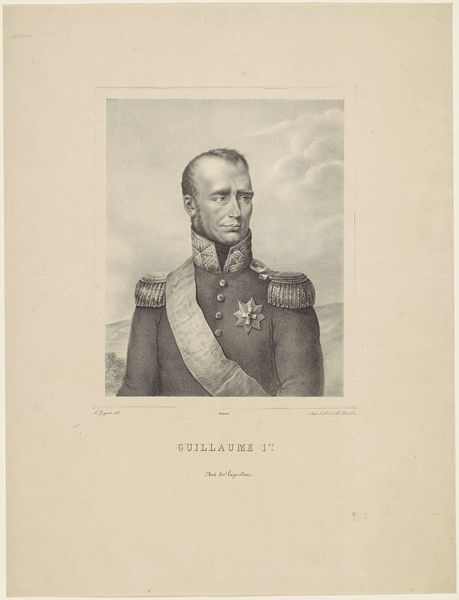
#
portrait
#
neoclacissism
# print
#
archive photography
#
historical photography
#
history-painting
#
academic-art
Dimensions: height 396 mm, width 290 mm
Copyright: Rijks Museum: Open Domain
Curator: Here we have a print from between 1831 and 1833, depicting Willem II, King of the Netherlands. Hendrik Jan Heerenbrood is credited as the artist for this piece which now resides at the Rijksmuseum. Editor: Immediately, I’m struck by the coldness of this image. The King stands rigidly in his military attire, almost distanced from the battlefield scene behind him. Curator: Precisely, Willem II is positioned as this almost neoclassical hero. It’s a portrait intended to convey authority and military prowess. Note how the composition employs a backdrop suggestive of a victorious military encampment. Editor: While his stance aims to communicate power, I see something fragile in it. His arms are tightly crossed, creating a defensive posture—almost as if he is trying to hold himself together in a moment of uncertainty, regardless of any triumph. Curator: It’s a complex intersection, certainly. Consider the political climate: The Netherlands was solidifying its national identity and this kind of representation reinforces the monarchy's importance to that identity. Academic art in the 19th century frequently served such explicitly propagandistic functions. Editor: I’m curious, who was this print really aimed at? Was it intended for popular consumption, fostering a sense of national unity, or more for the consumption of the elites of the time? Its success depends greatly on audience interpretation. To me it appears that this archive photography aims to represent dominance of the ruler and is more political propaganda than true portrayal. Curator: It was most likely aimed at a broad public, hoping to disseminate an image of a strong leader post-independence. Printmaking allowed for wider circulation of such images, shaping public perception on a scale previously unattainable. Editor: Yet, its formality might alienate some. How would an average citizen during that time react to this highly staged, regal portrayal during the advent of a more democratized society? Curator: It’s a pertinent question to consider how accessible the symbolism was. What resonates as power for some, might read as alienating to others. The map and the sword might carry different significance depending on class and experience. Editor: Indeed. While analyzing such work it's important to contextualize it within socio-political issues of the time period while also appreciating how those messages affect us in present day society. Thank you for offering such useful insight on the artwork. Curator: Of course, analyzing artwork's ability to not only function during the period it was produced but even today makes evaluating work rewarding. Thank you.
Comments
No comments
Be the first to comment and join the conversation on the ultimate creative platform.
